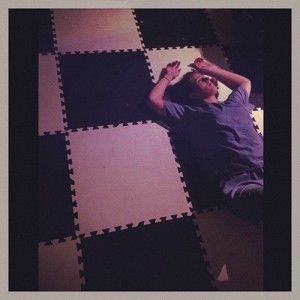By Michael Bilow
 I greatly enjoyed Epic Theatre Company’s performance of Alice in Wonderland, a version of Lewis Carroll’s classic created by The Manhattan Project, and even saw it a second time. It’s not at all for everyone, though. The Andre Gregory/Manhattan Project model is at the edge of experimental theater; it’s probably the most famous thing Gregory did as a director.
I greatly enjoyed Epic Theatre Company’s performance of Alice in Wonderland, a version of Lewis Carroll’s classic created by The Manhattan Project, and even saw it a second time. It’s not at all for everyone, though. The Andre Gregory/Manhattan Project model is at the edge of experimental theater; it’s probably the most famous thing Gregory did as a director.
It assumes a familiarity with the basic original work, at least a familiarity with the original characters: a white rabbit, a hookah-smoking caterpillar, a mad hatter, a dormouse, and so on. Some of the jokes rely on this familiarity, such as why the mouse has a French accent.
I’ve long considered the Andre Gregory stage version from the 1960s to be the most interesting (and my personal favorite) interpretation of the story. It conceptualizes the books as a kind of internal psychological experience about the subjectivity of perception, or colloquially, as analogous to an acid trip. The intention of the theatrical work is to make the audience call into question the reality of their own senses.
This is an incredible challenge for an actor and a very ambitious project for an acting company. Andre Gregory was trying to kick away all of the usual props that keep the audience anchored. Epic does this by knocking around a single overhead light to keep it in motion, having actors throw objects to each other, and asking actors to assume weird postures of physical interaction where characters lie on top of each other to play elements such as a table or a mushroom.
The film My Dinner with Andre is an exploration of Andre Gregory’s whole philosophy of theater, which is very different from that of a typical director. He is known for seeing theater as a transformative experience for the actors and regarding the audience as participants, or at least people along for the ride. Another film involving Gregory, Vanya on 42nd Street, is literally about a company of actors who decide to perform a Chekhov play over and over again in a theater, for no audience, in order to explore it for themselves.
People coming into an Andre Gregory theatrical work who are expecting the kind of linear narrative that has been going on since Aristotle are going to be really bewildered, just like the art critics who looked at Miro or Magritte and wondered, “Why does this woman have a flower growing out of her head?” or “Why is the sky wearing a bowler hat?” These questions miss the point, which is to show things in a way that unnerves the mind, making the viewer aware of the unreliability of the senses and of the assumptions that underlie the apparent familiarity of the world of experience.
When Epic announced a few months ago that they were going to take on Alice, I was really excited. It takes cojones. Trinity MFA recently performed both Ionesco’s Rhinoceros and Rivera’s Marisol, both of which are similarly intended to unnerve the audience, although both of those use the device of a main character who serves as a proxy for the audience, observing the strange environment from a place of stability.
Alice, with a protagonist who is only seven and a half years old, has no such anchoring proxy. Her mild protests – “One cannot believe impossible things” – are famously met with admonitions – “I once managed to believe six impossible things before breakfast.” Setting the play in what is implied to be a mental hospital with the actors wearing identical medical scrubs reinforces this, especially the opening scene where medications seem to be dispensed. Do the pills make the characters crazy, or do they keep them from being crazy? Can they ever know? Is there a difference?